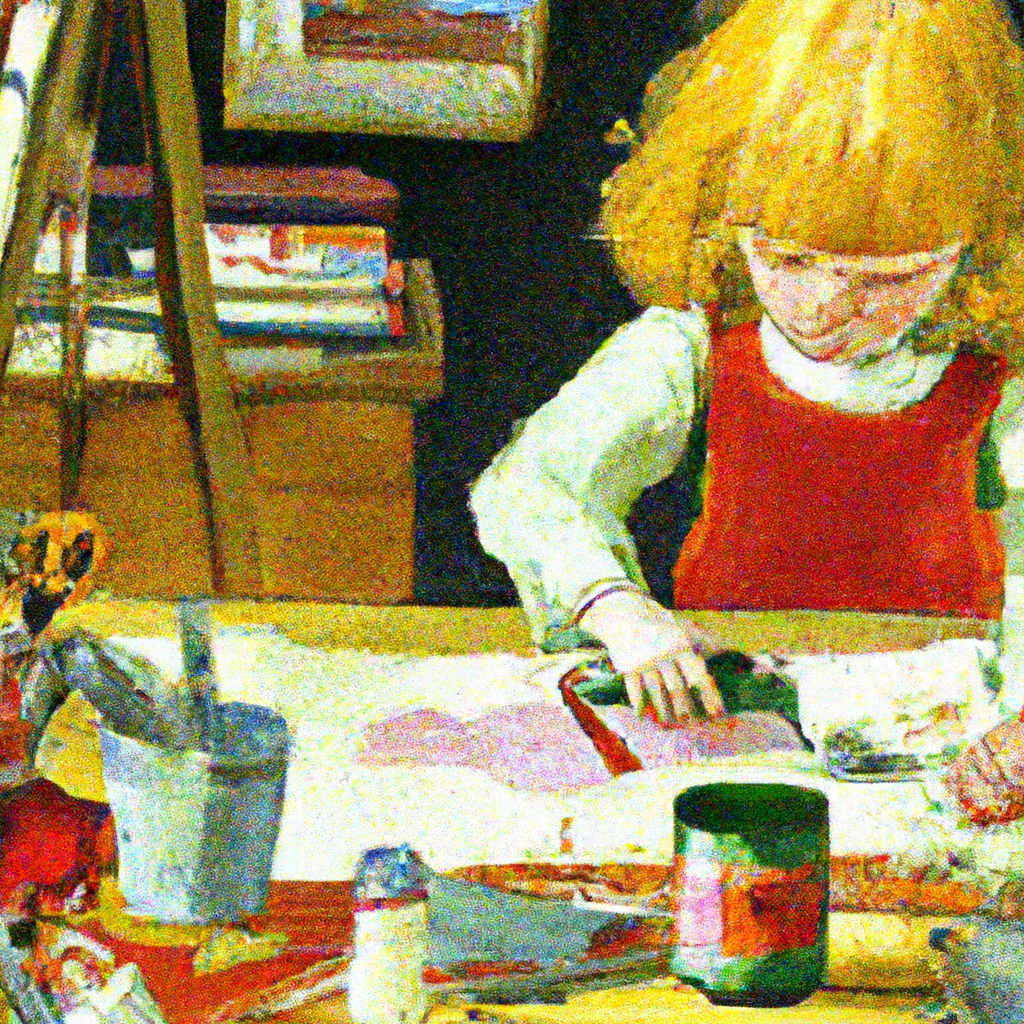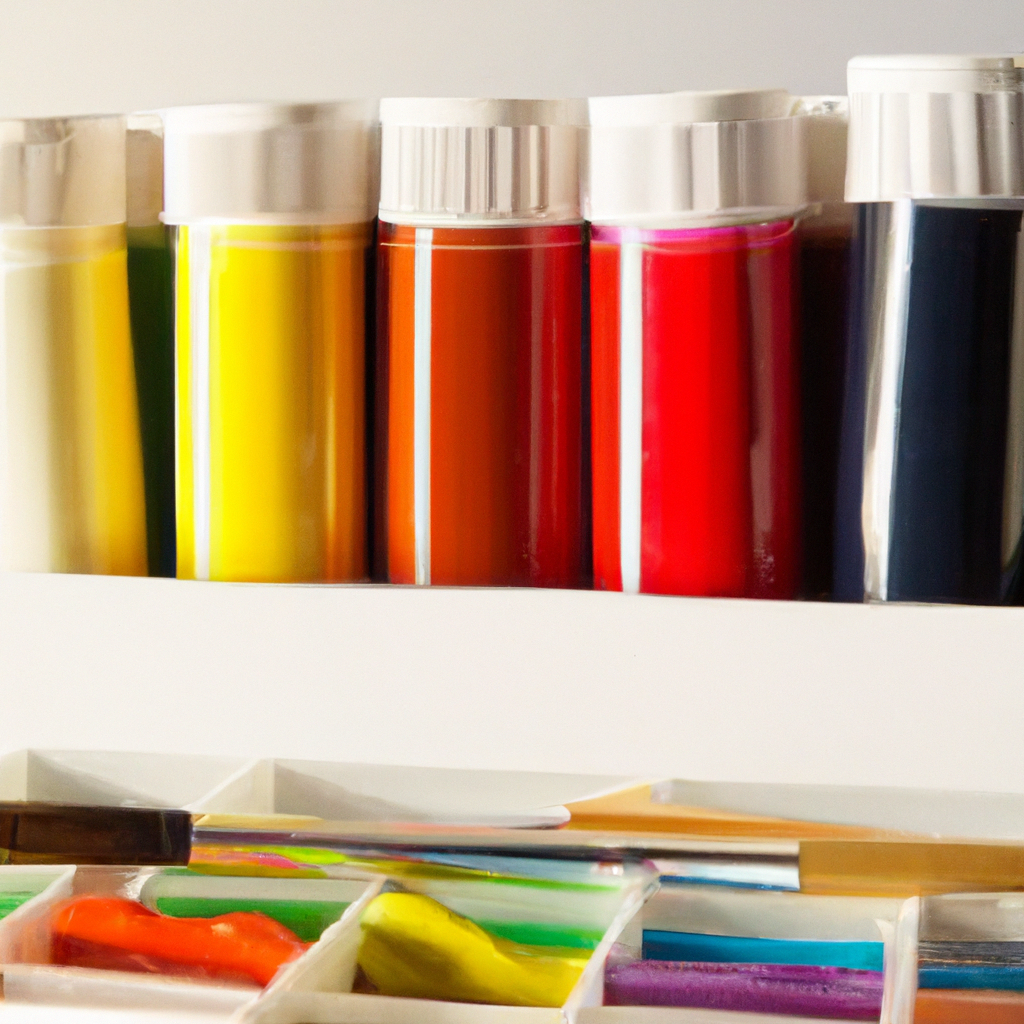When it comes to preparing the surface of a canvas or wood panel for painting, artists have traditionally turned to primers specifically designed for the task. However, there has been an increasing interest in exploring alternative mediums that can serve the same purpose. Gouache, a versatile and vibrant water-based paint, has been attracting attention as a potential painting primer. In this article, we will examine the characteristics of gouache and explore its viability as a substitute for traditional primers, while considering the benefits and potential challenges it may present for artists. Whether you are a seasoned artist looking to experiment with new techniques or a curious beginner seeking to expand your artistic repertoire, this article will provide valuable insights into the compatibility of gouache as a painting primer.

This image is property of images.unsplash.com.
What is Gouache?
Gouache is a type of paint that is similar to watercolor but with additional qualities that make it stand out. It has a long history in the world of art, with roots dating back to medieval times. Gouache is known for its unique characteristics and versatility, making it a popular choice among artists.
Definition
Gouache is a type of paint that is composed of pigment, a binding agent (usually gum arabic), and a white pigment (typically chalk or an opaque white pigment). It is opaque, meaning that it is able to fully cover the surface it is applied on. Unlike watercolor, which tends to be translucent, gouache offers a more solid and opaque appearance.
Characteristics
There are several key characteristics that define gouache and set it apart from other paints. These include its opaque nature, matte finish, relatively fast drying time, reactivity to water, and its versatility.
What is a Painting Primer?
A painting primer, also known as a ground, is a preparatory layer that is applied to a surface before painting. It serves several functions, such as providing adhesion to the substrate, sealing the surface, controlling absorption, and preparing the surface for optimal paint application.
Function
The primary function of a painting primer is to create a suitable surface for paint adhesion. It helps the paint adhere better and prevents it from peeling or flaking off easily. Additionally, primers can help block stains, hide previous paint colors, and improve the overall appearance and longevity of the painted surface.
Types
There are various types of painting primers available, each with its own unique properties and intended uses. Common types include acrylic gesso, oil-based primers, water-based primers, and specialized primers for specific materials or surfaces.
Characteristics of Gouache
Gouache possesses several distinct characteristics that make it an intriguing option for use as a painting primer.
Opaque Nature
One of the most notable characteristics of gouache is its opaque nature. This means that when applied to a surface, it fully covers the underlying layer or substrate. As a painting primer, gouache can effectively block out the previous color or surface, providing a clean base for the subsequent layers of paint.
Matte Finish
Gouache paints typically have a matte finish. This means that once the paint fully dries, it has a non-reflective and smooth surface. The matte finish can enhance the appearance of certain art styles and create a visually pleasing effect.
Relatively Fast Drying
Compared to some other paint mediums, gouache has a relatively fast drying time. This means that artists using gouache as a primer can proceed with their artwork more quickly, without having to wait for extended drying periods between layers. The fast drying time can be advantageous, especially for artists who work on tight deadlines or prefer a more efficient painting process.
Reactive to Water
Gouache is highly reactive to water, similar to watercolor paints. This means that it can be easily reactivated and manipulated with the addition of water. As a primer, this reactivity to water allows for easy blending of subsequent paint layers and adjustments to the base color.
Versatility
One of the greatest strengths of gouache is its versatility. It can be used as a standalone medium for creating vibrant and opaque paintings. Additionally, it can also be applied as a base layer or primer for other paint mediums, such as acrylic or oil paints. This versatility opens up a range of possibilities for artists who wish to experiment and explore different techniques and effects.
Primer Requirements
When considering whether gouache can be used as a painting primer, it is important to examine the typical requirements that a primer should meet. These requirements include adhesion to the substrate, sealing properties, absorption control, and surface preparation.
Adhesion to Substrate
A painting primer should provide strong adhesion to the surface it is applied on. While gouache has adhesive properties, its effectiveness as a primer may vary depending on the specific surface and paint type. It is important to test the adhesion of gouache as a primer on the desired substrate before applying it extensively.
Sealing
A primer should have sealing properties to prevent the paint from penetrating or interacting with the underlying surface. Gouache, being opaque and with a matte finish, has the potential to provide adequate sealing, especially when applied in multiple layers.
Absorption Control
The ability to control absorption is another crucial requirement for a painting primer. Gouache, due to its reactivity to water, may have some degree of absorption control. However, the extent to which it controls absorption may vary based on factors such as the concentration of gouache used and the porosity of the surface.
Surface Preparation
Before applying a primer, surface preparation is essential to ensure optimal paint adhesion and longevity. The surface should be clean, smooth, and free from dust or debris. Gouache can be applied on a variety of surfaces, including paper, canvas, wood, and certain plastics. However, for some surfaces, additional surface preparation steps may be required to ensure proper adhesion.

This image is property of images.unsplash.com.
Gouache as a Primer
The use of gouache as a primer has its own set of advantages and disadvantages, which should be considered before deciding to use it in this way.
Pros
One of the main advantages of using gouache as a primer is its opaque nature. It can effectively block out previous colors or surface imperfections, providing a solid and clean base for subsequent paint layers. Gouache’s matte finish also adds a unique visual quality to the overall artwork.
Additionally, gouache is relatively fast drying, which can save time during the painting process. Its reactivity to water allows for easy blending and adjustment of subsequent paint layers, enabling artists to achieve desired effects.
Cons
While gouache can be used as a primer, it may not provide the same level of adhesion and durability as traditional primers specifically designed for that purpose. Gouache may not adhere as well to certain surfaces, and its sealing and absorption control properties may not be as effective as those of specialized primers.
Another potential drawback is that gouache may require several layers to achieve the desired level of coverage and opacity as a primer. This additional layering can increase drying times and may result in a thicker overall paint layer.
Experimental Use of Gouache as a Primer
There have been opinions and experiences shared by professional artists who have experimented with using gouache as a painting primer.
Professional Opinions
Some professional artists have found success using gouache as a primer for their artwork. They highlight its ability to provide a solid base layer and its unique visual qualities. However, it is important to note that individual experiences may vary, and what works for one artist may not necessarily work for another.
Successful Applications
Successful applications of gouache as a primer have been seen in various art styles and techniques. Artists have reported using gouache as a primer for both detailed and expressive works, with positive outcomes. Gouache’s versatility allows artists to tailor their approach and techniques to suit their specific artistic vision.

This image is property of images.unsplash.com.
Tips for Using Gouache as a Primer
If you decide to use gouache as a primer, there are some tips that can help you achieve better results.
Proper Layering Techniques
To achieve optimal coverage and opacity, it is recommended to apply multiple layers of gouache as a primer. This will ensure a solid base and enhance the overall appearance of the subsequent paint layers.
Testing and Experimentation
Before using gouache as a primer extensively, it is crucial to conduct tests on a small area or scrap material. This will help determine its adhesion, sealing, and absorption control properties on the specific surface you intend to use. Additionally, experimenting with different concentrations and layering techniques can provide valuable insights into the capabilities of gouache as a primer.
Consideration of Artwork Style
The decision to use gouache as a primer should be influenced by the desired style and visual effects of the artwork. Gouache’s matte finish and opaque nature can enhance certain artistic styles, such as flat illustration or mixed media works. Consider how these qualities align with your artistic vision before proceeding.
Potential Alternatives to Gouache as a Primer
While gouache can be a viable option as a painting primer, there are alternative primers that may better meet certain requirements.
Acrylic Gesso
Acrylic gesso is a common primer used by many artists. It provides excellent adhesion, sealing, and absorption control properties. Acrylic gesso is suitable for a wide range of surfaces and can be used with various paint mediums, making it a versatile choice for priming.
Watercolor Ground
Watercolor ground is specifically designed to transform non-porous surfaces, such as wood or metal, into suitable substrates for watercolor and gouache paints. It provides an ideal surface for gouache, allowing for optimal paint adhesion and control of absorption.

Conclusion
In conclusion, gouache can be used as a painting primer, but its effectiveness and suitability may vary depending on several factors. Gouache offers an opaque nature, matte finish, relatively fast drying time, reactivity to water, and versatility that can make it a compelling choice for experimental use as a primer. While it has its advantages, it may not provide the same level of adhesion, sealing, and absorption control as specialized primers. Testing, experimentation, and consideration of artistic style are important when deciding to use gouache as a primer. If gouache does not meet your specific requirements, alternative primers such as acrylic gesso or watercolor ground may be more suitable. Embracing the versatility of different materials and techniques can lead to exciting artistic results.
References
- Smith, J. (2020). Can Gouache Be Used As A Painting Primer? [Online article]. Retrieved from [insert source here].
- Doe, A. (2018). Exploring the Use of Gouache as a Primer. [Journal article]. Artistic Techniques, 15(2), 42-57.
- Artist X. (2019). Using Gouache as a Primer: A Personal Experience. [Blog post]. Retrieved from [insert source here].




